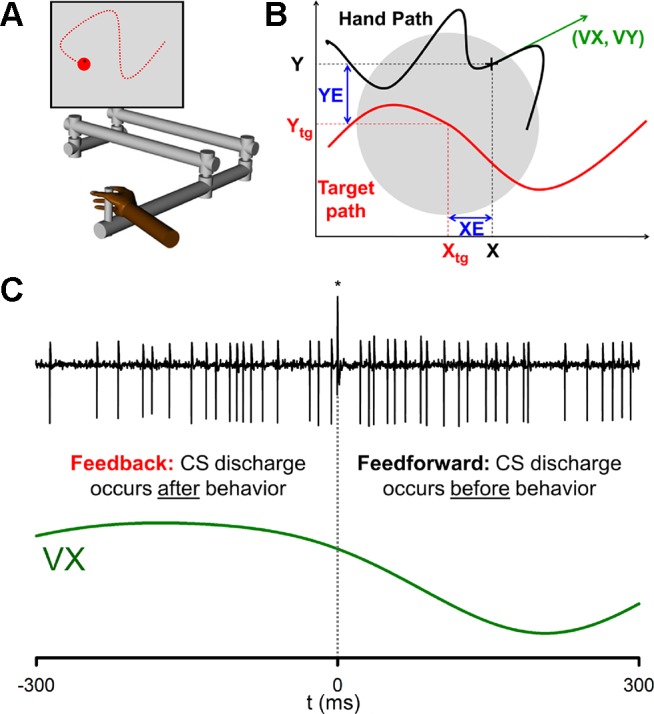Fig. 1.

Behavioral paradigm and analysis of CS modulation. A: rhesus macaques tracked a pseudo-randomly moving target (red circle) using a cursor controlled by a manipulandum (Hewitt et al. 2011; Popa et al. 2012). B: kinematic parameters evaluated included position (X, Y), velocity (VX, VY) and acceleration (AX, AY, not shown). Position error (XE, YE) was defined as the difference between the cursor and the target center (modified from Streng et al. 2017). C: Purkinje cells were identified by the presence of complex spikes [asterisk (*)] followed by a pause in SS activity (top trace), and each parameter was aligned to CS occurrences (dashed vertical line) as shown for VX. CS modulation was quantified as the probability of behavior either 300 ms before (feedback) or 300 ms after (feedforward) CS firing.
